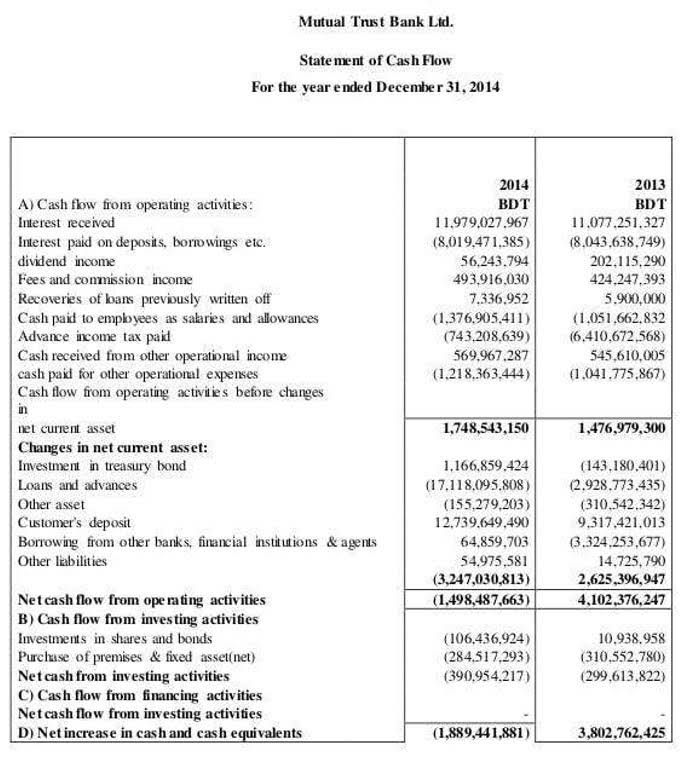
The term “product cost” refers to the expenses incurred during a product’s manufacturing process. The second step is assigning overhead costs to the identified activities. In this step, overhead costs are assigned to each of the activities to become a cost pool. A cost pool is a list of costs incurred when related activities are performed. Table 6.4 illustrates the various cost pools along with their activities and related costs. Examples of pure service companies include accounting firms, law offices, real estate appraisers, business consultants, professional dancers, etc.
- It can be helpful in decision-making by providing a more accurate picture of the actual cost of each product.
- You can accurately determine your product’s cost by considering all three components.
- To achieve this, management needs an accounting system that can accurately assign and document the costs for each product.
- Managers use the information in the manufacturing overhead account to estimate the overhead for the next fiscal period.
- Besides profit breakeven point, variants of breakeven analysis can include cashflow breakeven, EBITDA breakeven, and EBIT breakeven.
- These are all-too-common experiences that can be easily remedied with a well-implemented product costing system.
If you find that you’re regularly losing business because your rates are too high, it might be time to consider lowering them. Another possibility is that they’re not very good at marketing and don’t understand how to price their offerings correctly. Finally, it’s also possible that they’re deliberately trying to discourage specific customers from doing business with them. Whatever the reason, overpricing can ultimately hurt a business by driving away potential customers. If you are a company considering undercosting or overcosting your products, it is important to understand its potential consequences.
How to calculate product cost
However, it may pay off in the long run if they deliver high-quality code. Some cost-saving measures, like hiring junior developers, may result in several issues later on in the development process. You may be envisioning a SaaS product with several features and components.

When making decisions about short-term production and sale prices, managers may change the cost of the product to exclude the component that accounts for overhead expenses. These costs include materials, labor, production supplies and factory overhead. The cost of the labor required to deliver a service to a customer is also considered a product cost.
What is a Product Cost? Explained In-Depth with Examples
The software development lifecycle is time-consuming, and you may face obstacles that could lengthen your timeline. It depends on the specific product costs consist of circumstances of each business and industry. To see our product designed specifically for your country, please visit the United States site.
Prescription Drugs: Spending, Use, and Prices – Congressional Budget Office
Prescription Drugs: Spending, Use, and Prices.
Posted: Wed, 19 Jan 2022 08:00:00 GMT [source]
With a bit of time and effort, businesses can be well on their way to managing products more efficiently and profitably. By understanding the relationship between product and production costs, businesses can better manage their operations and strive toward greater profits over time. By reducing costs where possible while also controlling prices, companies can create an environment that leads to success in the long term. Materials, labor, production supplies, and factory overhead are all included in these expenditures.
Accounting for Product Cost
This method is typically used in manufacturing environments where products are made in large batches. The total cost of production is divided by the number of units produced to arrive at the cost per unit. In conclusion, while depreciation is not considered a direct product cost, it is an indirect cost that is included in the manufacturing overhead cost and the total product cost. With thoughtful cost management, companies can ensure that their products remain competitively priced and profitable for many years. To calculate product cost, determine the materials needed to produce it. Research suppliers and compare prices to get the best deal on each item.
- There are a few possible explanations for why some business owners might overcost their products or services.
- Keeping track of product costs is critical for pricing and cost control.
- Absorption costing is generally used in businesses that manufacture physical products.
- Product costs are costs necessary to manufacture a product, while period costs are non-manufacturing costs that are expensed within an accounting period.
- Cost of goods sold (COGS) refers to the direct costs of producing the goods sold by a company.
- This gives them an edge over the competition as their product is cheaper.
What is product cost and how to calculate with example LogRocket Blog
The term “product cost” refers to the expenses incurred during a product’s manufacturing process. The second step is assigning overhead costs to the identified activities. In this step, overhead costs are assigned to each of the activities to become a cost pool. A cost pool is a list of costs incurred when related activities are performed. Table 6.4 illustrates the various cost pools along with their activities and related costs. Examples of pure service companies include accounting firms, law offices, real estate appraisers, business consultants, professional dancers, etc.
If you find that you’re regularly losing business because your rates are too high, it might be time to consider lowering them. Another possibility is that they’re not very good at marketing and don’t understand how to price their offerings correctly. Finally, it’s also possible that they’re deliberately trying to discourage specific customers from doing business with them. Whatever the reason, overpricing can ultimately hurt a business by driving away potential customers. If you are a company considering undercosting or overcosting your products, it is important to understand its potential consequences.
How to calculate product cost
However, it may pay off in the long run if they deliver high-quality code. Some cost-saving measures, like hiring junior developers, may result in several issues later on in the development process. You may be envisioning a SaaS product with several features and components.
When making decisions about short-term production and sale prices, managers may change the cost of the product to exclude the component that accounts for overhead expenses. These costs include materials, labor, production supplies and factory overhead. The cost of the labor required to deliver a service to a customer is also considered a product cost.
What is a Product Cost? Explained In-Depth with Examples
The software development lifecycle is time-consuming, and you may face obstacles that could lengthen your timeline. It depends on the specific product costs consist of circumstances of each business and industry. To see our product designed specifically for your country, please visit the United States site.
Prescription Drugs: Spending, Use, and Prices – Congressional Budget Office
Prescription Drugs: Spending, Use, and Prices.
Posted: Wed, 19 Jan 2022 08:00:00 GMT [source]
With a bit of time and effort, businesses can be well on their way to managing products more efficiently and profitably. By understanding the relationship between product and production costs, businesses can better manage their operations and strive toward greater profits over time. By reducing costs where possible while also controlling prices, companies can create an environment that leads to success in the long term. Materials, labor, production supplies, and factory overhead are all included in these expenditures.
Accounting for Product Cost
This method is typically used in manufacturing environments where products are made in large batches. The total cost of production is divided by the number of units produced to arrive at the cost per unit. In conclusion, while depreciation is not considered a direct product cost, it is an indirect cost that is included in the manufacturing overhead cost and the total product cost. With thoughtful cost management, companies can ensure that their products remain competitively priced and profitable for many years. To calculate product cost, determine the materials needed to produce it. Research suppliers and compare prices to get the best deal on each item.
Catégories
Les plus lus
AAFX Trading Review 2024 Information about AAFX Trading Forex Broker
AAFX Trading Forex Brokers Reviews
Почему альпари
Bond finance Wikipedia
10 Best AI Tools for Accounting & Finance in 2024
Tags